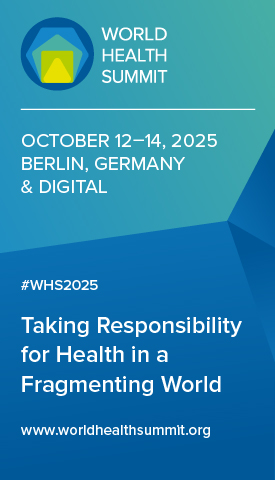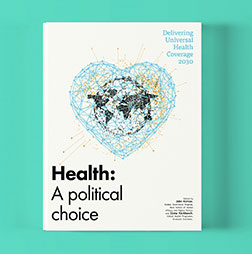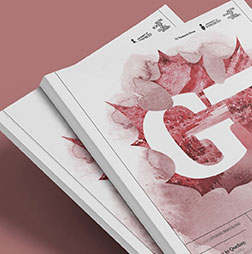Beyond traditional aid: Redirecting billionaire philanthropy to health outcomes
While governments abandon their global health commitments at breakneck speed, the world’s billionaires are sitting on $16 trillion – enough money to fund the world’s health needs for the next four decades. This stark juxtaposition reveals the most profound shift in global power since the end of the Cold War: the transfer of life-and-death decisions from democratic cabinet rooms to private boardrooms.
The scale of this funding crisis is stark. The world needs $371 billion annually to hit the health targets of the Sustainable Development Goals by 2030, yet public funding is collapsing under political pressure. The United Kingdom recently slashed its aid by 40%, Belgium and Finland by 25%, and USAID’s complete shutdown represents the largest contraction in development funding history. The US funding cuts alone could force 16.8 million pregnant women to lose essential services and leave 1 million malnourished children untreated annually, with another 12–18 million malaria cases going unaddressed each year.
This widening chasm between shrinking public resources and surging private wealth creates both a crisis and an unprecedented opportunity.
The speed advantage of private capital
Private philanthropic capital operates in an entirely different universe of speed and risk tolerance. When Covid-19 struck, philanthropic investment through the Coalition for Epidemic Preparedness Innovations helped accelerate vaccine development to a 12–18 month timeline instead of a process that normally takes 15 years or more through traditional government channels. MacKenzie Scott, the former wife of Jeff Bezos, demonstrates this velocity in action: she deployed over $19 billion in health and social funding in just five years using a no-strings-attached approach that would be nearly impossible within government bureaucracies.
The speed advantage stems from a fundamental difference in mindset. Billionaires who built their fortunes believe they can solve complex problems with the same efficiency they brought to business. They tolerate higher risks and are not constrained by electoral cycles. While the International Organization for Migration is cutting more than 3,000 workers and the United Nations High Commission for Refugees has faced up to 6,000 layoffs this year while slashing hiring by 80%, philanthropists are doubling down. Bill Gates alone has pledged $200 billion with a 2045 sunset deadline. Yet this represents only a fraction of what is possible when billionaires’ combined annual income approaches $2 trillion globally.
The democratic dilemma
This concentration of power, however, does not come without risks. When individual billionaires determine research priorities and redirect entire health systems, essentially billions of lives are governed without democratic oversight. The Gates Foundation now outspends most governments and serves as the World Health Organization’s largest funder – concentrating global health decision-making in private hands to an unprecedented degree.
The distortions are already visible. Philanthropic priorities often favour glamorous disease eradication campaigns over building unglamorous health systems. Mental health and chronic diseases receive far less attention than infectious diseases that promise headline-worthy victories. Meanwhile, local organisations that consistently deliver better results at lower costs still receive only 1.2% of humanitarian assistance.
Yet this democratic deficit does not negate the mathematical reality: if the world’s billionaires committed just over 2.3% of their wealth annually to health, it would generate the $371 billion needed to close the entire global health funding gap.
Designing better engagement
The key challenge here lies in harnessing private wealth while maintaining accountability and effectiveness. Three mechanisms could bridge this gap:
Health outcome bonds could structure giving as performance-based securities where philanthropists earn ‘returns’ in the form of measurable health improvements rather than financial gains. Social impact bonds would pay out based on achieved mortality reductions, disease eliminations or quality-adjusted life years gained. This financial innovation appeals to investors’ comfort with structured products while ensuring resources flow only to effective interventions.
Innovation laboratory partnerships could pair billionaires with leading medical institutions to create dedicated research facilities focused on breakthrough health solutions. Rather than funding existing programmes, philanthropists could establish research centres targeting specific health challenges, from cancer immunotherapy to tropical disease vaccines. This satisfies the entrepreneurial desire to build something new while leveraging institutional scientific expertise.
Peer accountability circles could create small groups of billionaire philanthropists who collectively oversee each other’s health investments through structured peer review processes. Assessment meetings, shared evaluation criteria and mutual oversight would provide the strategic discussion billionaires value while ensuring rigorous accountability standards.
The path forward
We face an uncomfortable but unavoidable necessity. With ‘my country first’ politics dismantling international cooperation, billionaire philanthropy may represent our most viable mechanism for maintaining global health infrastructure.
The infrastructure already exists – it simply needs a strategic redesign to appeal to wealth creators who want both impact and recognition.
The choice before us is stark: robust democratic oversight would clearly be preferable, but can we afford to wait for ideal governance while millions face preventable death? This is not about choosing the perfect system – it is about choosing the most viable one. In our increasingly fractured world, billionaire philanthropy has evolved from a charitable nicety to a fundamental component of global health infrastructure.












